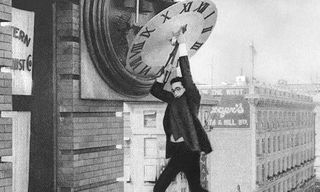
Part A was about why. I realized that these masters of the universe focused on 3 elements:
- They looked at how to minimize their failures by addressing their weaknesses.
- They optimized the time available to them in executing this mastery.
- Once achieved, they were able to replicate their successes.
In other words, they were able to do whatever was necessary to purge those bad habits that were not contributing to their success. Then, they were willing to embrace new habits and high leverage routines that helped them maintain a positive helpful personal equilibrium to deliver the desired results.
Part B was about how. For these masters, the greatness followed because they’d managed to jettison the superfluous and to implement those steps that needed to be taken over and over and over again – thereby understanding how to replicate their successes. For traders, this begins with specific written routines and roadmaps that eventually morph into real intuition.
Part C – the cornerstone of all profitable trading – is discipline. Discipline is the lubricant that makes it possible to consistently execute your methodology, to replicate success and to achieve greatness.
Once I understood why and how these investors had become great traders, I set out to build my own successful routines and paradigms that would work for me. I started with relatively simple daily “To Do” lists, but discovered quickly that the best planned days generally produced the best results. I prioritized my list and estimated how much time it would take to complete each task. I also learned to stay focused on completing a single task before moving forward to another.
I soon discerned that, as part of my daily routines, I needed to nibble away on weekly and monthly To-Dos if I was to avoid the dreaded slinky of time management – stretching out the slinky and having the inevitable tail come crashing back as it compressed. My written trading journal was an immense help during this period. Once I found a paradigm that worked for me and convinced myself to write with a brutally honest pen, that journal showed itself to be a potent collaborator. The 4 broad categories I wrote under were (1) personal; (2) market notes; (3) new ideas; and (4) post trade observations. And all were written with various colored pens that amplified certain commentaries.
In my journal, I chronicled my victories and my defeats. I asked the tough questions and reformulated my routines. To my delight, it became overwhelmingly obvious that staying organized and following disciplined roadmaps paid immense dividends. For example, I soon learned that an organized collection of chartlists is beautiful, powerful and profitable.
It can take a great deal of time and effort to orchestrate, but once completed, it’s astonishing how many charts you can review, how much information you can digest and how many market landscapes you can cover in a comparatively short time. My fanatical objective became one of how to optimize my time and maximize my observations. Out of this pursuit, there resulted my six “Permission to Buy” steps. These steps are merely groups of preformatted charts that facilitate a sort of x-ray vision of the markets.
First, scrutinizing overall market trends, then specific allocations, followed by breadth and volatility, then surveying key ETFs, researching sectors and industries, and finally examining the best-of-the-best individual equities. It is my belief that the most precious commodity God gives each of us is time. You may be the wealthiest person on the planet, but you have the same 24 hours in a day as I do. With my trading routines, I’ve figured out how to squeeze virtually 26 hours out of a market day. I do that by first focusing on my key daily routines. This is non-negotiable. I believe in what my charts are telling me, and I react appropriately and decisively. I judiciously monitor my priceless time just as I monitor my investments.
Finally, I have a written trading plan that incorporates my trading methodology and the other crucial ingredients that facilitate the replication of my profitable trades. The bottom-line is that you need physical tools, mechanisms and organizational engines to become a consistently profitable investor, but all of this must be wrapped in a cloak of discipline that you and only you can weave. The simple truth is that, in 90% of the cases, when experienced traders have the discipline to follow their routines, they will always earn more than inexperienced traders.
Trade well; trade with discipline!
-- Gatis Roze






